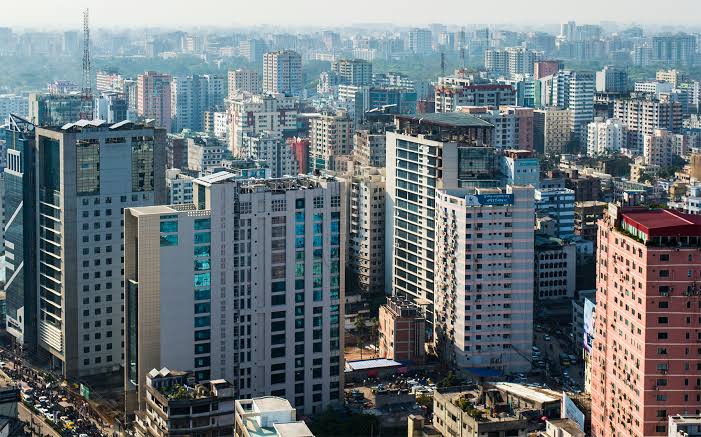Special Correspondent
Published:2021-03-26 15:12:51 BdST
Bangladesh outshines Pakistan in all economic, social indicators
The systemic exploitation of the people of East Pakistan by the West Pakistani power-mongers had prompted Bangalees to launch a struggle for liberation.
After a long struggle for nine months, Bangladesh achieved its victory on December 16, 1971.
Rising like a phoenix from the ashes, the country has made miraculous progress in all the sectors over the last 50 years since its independence.
Apart from recalling the bravery, pride, pain and sacrifice of Bangalees, it is the time to assess how much progress Bangladesh has made as a state compared to the country that once had oppressed it.
Holding its head high, Bangladesh has been moving forward leaving Pakistan behind in almost all economic and social indicators, becoming a role model of development.
Renowned economist and former Bangladesh Bank Governor Prof Dr Mohammed Farashuddin said, “Bangladesh has outdone Pakistan in all the sectors. The country has made tremendous economic, social and cultural progress. International Monetary Fund, World Bank, Indian economist Amartya Sen, Pakistani economist Mahbub ul Haq and many other organisations and individuals have lauded Bangladesh’s advancements.”
Data revealed by the government and private research organisations of both the countries also support this statement on Bangladesh’s socioeconomic development.
Bangladesh’s GDP growth slumped to 5.2 percent at the end of 2019-20 fiscal year due to the coronavirus pandemic after registering an 8.2 percent growth in 2018-19 financial year.
Pakistan’s GDP growth stood at -0.4 percent at the end of 2019-20 FY which was 1.9 percent in 2018-19 FY.
Bangladesh’s per capita income was estimated at $2,064 at the end of last year compared to $120 in 1972 while Pakistan’s per capita income stood at $1,130 at the end of 2020 while it was $180 in 1971.
Bangladesh’s foreign exchange reserves crossed $43.8 billion in February 2021 while forex reserves of Pakistan were recorded at $12.94 billion during the same time.
Pakistan’s Rupee is now trading well below the value of Bangladesh’s Taka: Tk 84.62 equals to one US dollar while it costs Rs 156 in Pakistan.
Besides, the debt per capita of Bangladesh is $665 which is almost half the amount of Pakistan’s $1,154.
Bangladesh bagged $33.67 billion in 2019-20 FY from its exports while Pakistan’s income from exports was $22 billion during the same period.
Zahid Hussain, former lead economist at the World Bank, said, “Since the independence, Bangladesh has been most successful in poverty reduction.”
Infant and maternal mortality rate has decreased while life expectancy, literacy rate and primary school enrolment have increased in the country, he said, adding that the empowerment of women and macroeconomic management have ensured Bangladesh’s progress.
According to many, Bangladesh’s success in social sectors is commendable.
Bangladesh has showed more success in controlling its population than Pakistan.
Population of then East Pakistan was 42 million in 1951 while West Pakistan had a population of around 33.7 million in the year.
According to the UN data, Bangladesh’s estimated population was 164,689,383 in the middle of 2020 while Pakistan’s population was 220,892,340 during the same period.
Fewer babies die at birth in Bangladesh than in Pakistan.
The infant mortality rate in Bangladesh has decreased to 28 per 1,000 live births from 224.6 in 1968 while Pakistan’s infant mortality rate is 57.99 which was 150.2 in 1968.
The maternal mortality rate is 165 per 100,000 live births in Bangladesh while it is 178 in Pakistan.
The average life expectancy has risen to 73 years in Bangladesh from less than 40 in 1971 while it is 67.48 years in Pakistan.
The literacy rate in Bangladesh stands at 74.70 per cent which is 59.13 per cent in Pakistan.
The unemployment rate in Bangladesh is 4.15 per cent against 5.50 per cent in Pakistan.
The participation rate of female labour force in Bangladesh has reached 36.42 per cent while it is 22.18 per cent in Pakistan.
Bangladesh ranks 133rd in the Human Development Index among 189 countries while Pakistan has been placed at 154th.
Apart from bringing a balance in income distribution, a variety in industrial products can take Bangladesh to another level, Dr Farashuddin stated.
“Apart from diversification of agricultural products, Bangladesh has to look for potential industrial sectors and expand them. It has already strong RMG, pharmaceuticals and leather industries. If the country can concentrate more on toys, sports goods, automobiles and micro and cottage industries, it’ll outshine many more countries.”
In four years’ time, Bangladesh is tipped to be a middle-income country.
Bangladesh is likely to be the biggest mover in the global GDP rankings in 2030, becoming the 26th largest economy in the world from 42nd in 2018, according to the latest HSBC Global Research report.
The report – The World in 2030: Our long-term projections for 75 countries – show that Bangladesh’s economy would jump 16 notches, highest by any country between 2018 and 2030.
Zahid Hussain said good governance is the key to Bangladesh’s future success. “To that end, the country should get rid of corruption and focus on inclusive development,” he said.
Unauthorized use or reproduction of The Finance Today content for commercial purposes is strictly prohibited.


